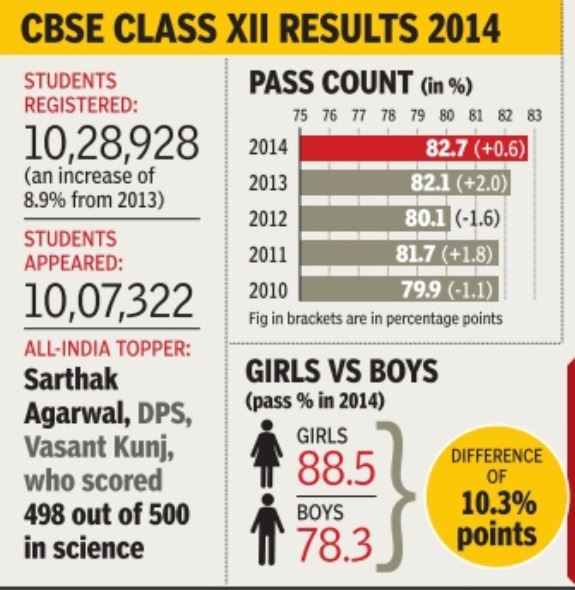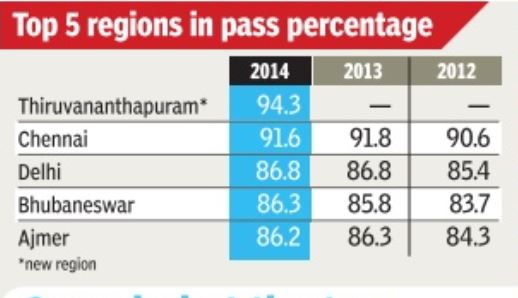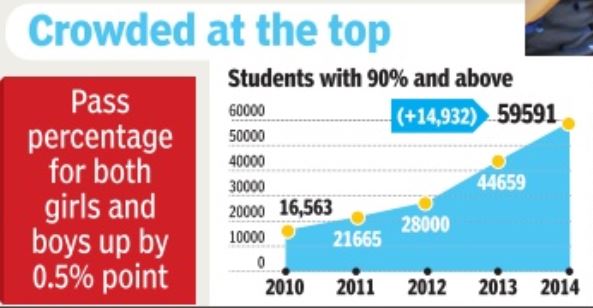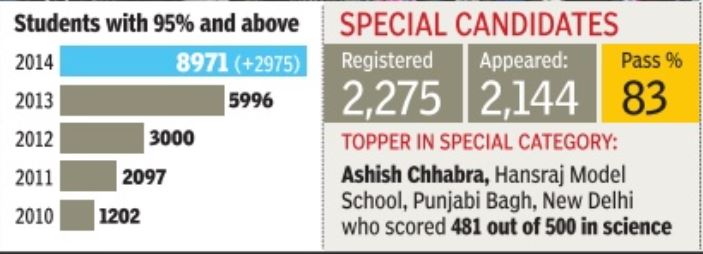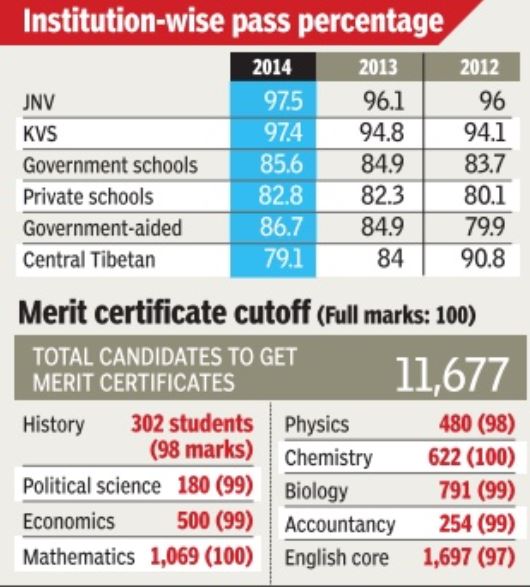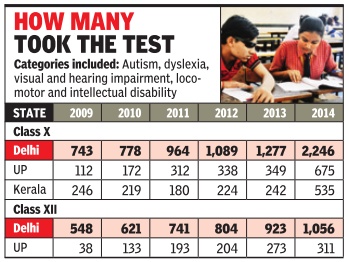Central Board of Secondary Education (CBSE)
This is a collection of articles archived for the excellence of their
content. You can update or correct this page, and/ or send graphs to the Facebook page, Indpaedia.com. All information used will be duly acknowledged. |
Growth in affiliations: 1996-2013
No. of CBSE schools triple in 17 yrs
Hemali Chhapia Shah & Vinamrata Borwankar
Mumbai:
TNN The Times of India Jun 18 2014
Almost half-a-dozen school boards—local, national and international—offer Indian students a choice of academic algorithms for careers ahead. The landscape of school education has for long promised a variety of options.
But of them all, CBSE (Central Board of Secondary Education), which was largely designed for those who moved home and could not be loyal to a state board, is picking up popularity across the nation.
In 1996-97, there were 4,843 affiliated schools to the CBSE board, which has grown to
15,000 institutes now, with most of the growth attributed to independent private schools, indicating the way the wind is blowing. While every year thousands of Indian parents find it tough to decide which board their child must sign up for, new school managements too face the same quandary when they start operations.
CBSE officials and school principals attribute the board’s popularity to its academic and administrative reforms which are student and school friendly. “Close to 98% of the schools that apply for affiliation are new institutes,” said an officer. Since 2005, the affiliation process is online and information at every stage is sent via electronic mail. “Also, the board is a national board, allowing parents to shift to just about anywhere in the country. The NCERT syllabus is also the most modern and wholesome one which is in tune with the times,” said a
CBSE administrative officer.
Little wonder then that in 2001-02 there were 6,293 affiliated schools, a number which increased to 13,898 in March 2012-13. Most of the growth came from independent institutes, the count of which went up from 3,483 in 2001-02 to 10,290 by the end of 2013.
Delhi has the largest number of CBSE schools, followed by UP, Haryana and Kerala.
Maharashtra, which has seen a 67% increase in the number of CBSE schools in the last three years, is home to over 500 institutes. “We have introduced and successfully implemented the continuous comprehensive evaluation system.
Class XII results: historical trends
CBSE is India's Central Board of Secondary Education
Disabled candidates
Jan 05 2015
Most disabled kids in CBSE exam from city
Shreya Roychowdhury
The largest number of disabled candidates appearing for classes X and XII evaluation under Central Board of Secondary Education (CBSE) is from Delhi.The state-wise count of students with disabilities, released by the Board also showed that the number of differently-abled students appearing for evaluation has been rising steadily . A total of 743 candidates appeared in Class X exam in 2009 in Delhi and more than double the figure appeared in 2014. There were no registrations of autistic students in Class X from 2009 to 2013 from Delhi, but there were five in 2014. Similarly, numbers of students with visual impairment or dyslexia have also increased significantly over the six years -from 214 to 403 in case of blind students and from 93 to 423 in case of those with dyslexia. For the Class XII exam, the biggest jump was in case of orthopedically challenged students. CBSE categorizes them as “handicapped“. In 2009, 272 mobility-impaired candidates from Delhi appeared for Class XII evaluations; the figure rose to 524 in 2014. The number of hearing-impaired students jumped from 25 in 2009 to 130 in 2014.
One of the reasons for the huge difference between Delhi and runners-up Uttar Pradesh, Kerala and Madhya Pradesh is that in Delhi majority of schools are CBSE-affiliated. There is no state board and government schools too come under CBSE.
“Inclusive education is strong in Delhi,“ George Abraham of NGO Score Foundation said adding, “There are more visually challenged students in mainstream schools in Delhi than in any other place in the country. It also depends on the support services, availability of reading material and trained teachers. Delhi is more education-friendly, more aware,“ he said. “Even CBSE is good at handling things here as regional officers are always well-equipped.“ He recalled the case of a student in Surat who was not allowed to use a computer to write his exam.“They were telling him to go to Ajmer. We managed it, but regional offices are not necessarily in sync with the headquarters.“
Madhumita Puri of Society for Child Development, Delhi, said most of the students who have been successfully appearing for these exams are either from private schools or from National Institute of Open Schooling (NIOS). “Sarva Shiksha Ab hiyan has helped and so has stricter implementation of 3% reservation in jobs,” Puri said, “The well-to-do always send their disabled children to school. Now, poor parents too have been making an effort.”
In case of Delhi, the number of students, who appeared for CBSE evaluation in Class X, is close to the num ber appearing in Class XII two years later.
A total of 743 students appeared in Class X evaluation in 2009 and 741 appeared in Class XII exam in 2011. Either the attrition rate is low with those completing Class X choosing to remain in school, or students from other states, where there is a dip in number, are moving in to Delhi.Puri said, “There is a huge migration of visually-impaired students into Delhi, but very little in the other categories.“
